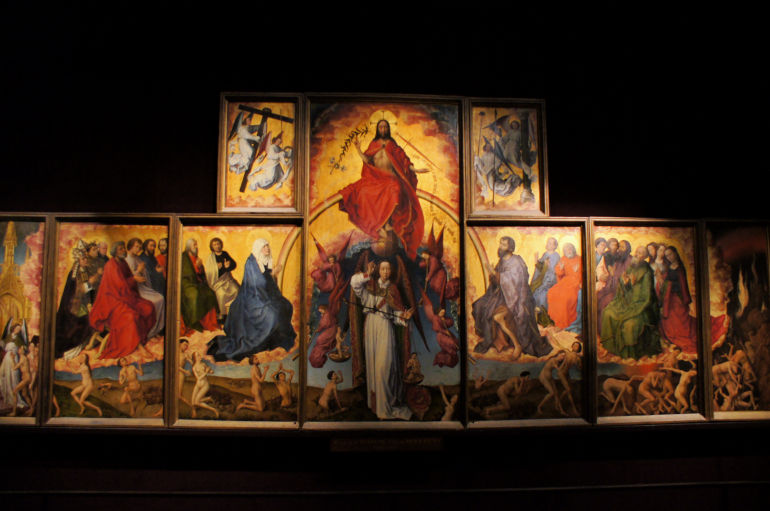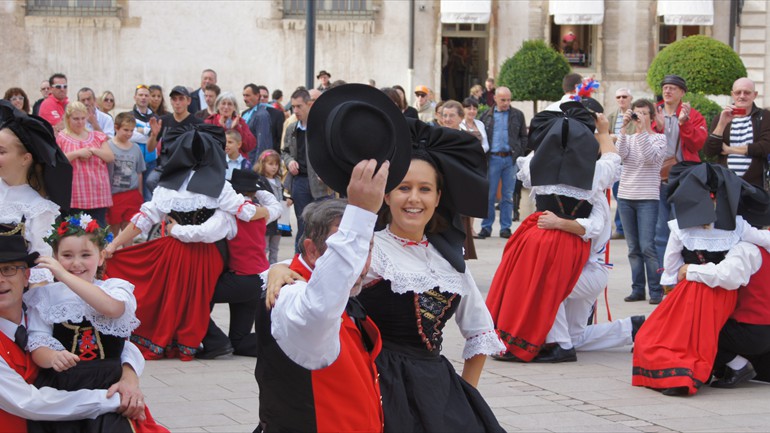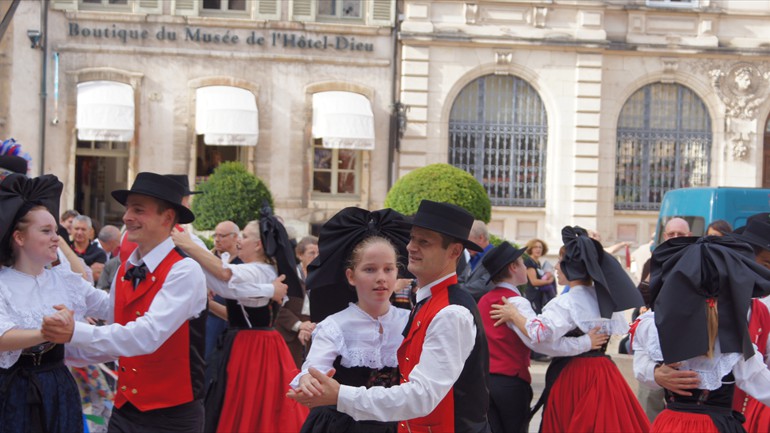The originally Celtic, later Roman town of Beaune received its town charter in 1203 from Odo III, Duke of Burgundy. From the 14th century, Beaune was the residence of the Dukes of Burgundy, along with Dijon. In the 15th century, the city walls began to be built, of which larger parts still remain. Today, some of them serve as wine warehouses for the large wine trading houses. When Charles the Bold, the last Duke of Burgundy, died in 1477, the city was annexed by Louis XI of France after a five-week siege.
Many buildings from the late Middle Ages, Renaissance and Baroque bear witness to the past.


The Hôtel-Dieu is a former hospital from the 15th century. It represents late Gothic architecture in all its glory.
In the large hall for the poor, there are sick beds with curtains arranged in two rows. The room has only a few windows, as it was once thought that the air coming in from outside made illnesses worse. The kitchen still contains the old pharmacy with stoneware and pewter collections. The complete layout of the complex illustrates how things must have looked during the hospital era. The plain hospital shows its colourful roof in the inner courtyard.
The hospice museum houses the famous winged altar of the Last Judgement by the Flemish painter Rogier van der Wayden and Gothic tapestries.


After the guided tour of the Hôtel-Dieu and a city walk, we saw a traditional costume group dancing in front of the tourist office.


















